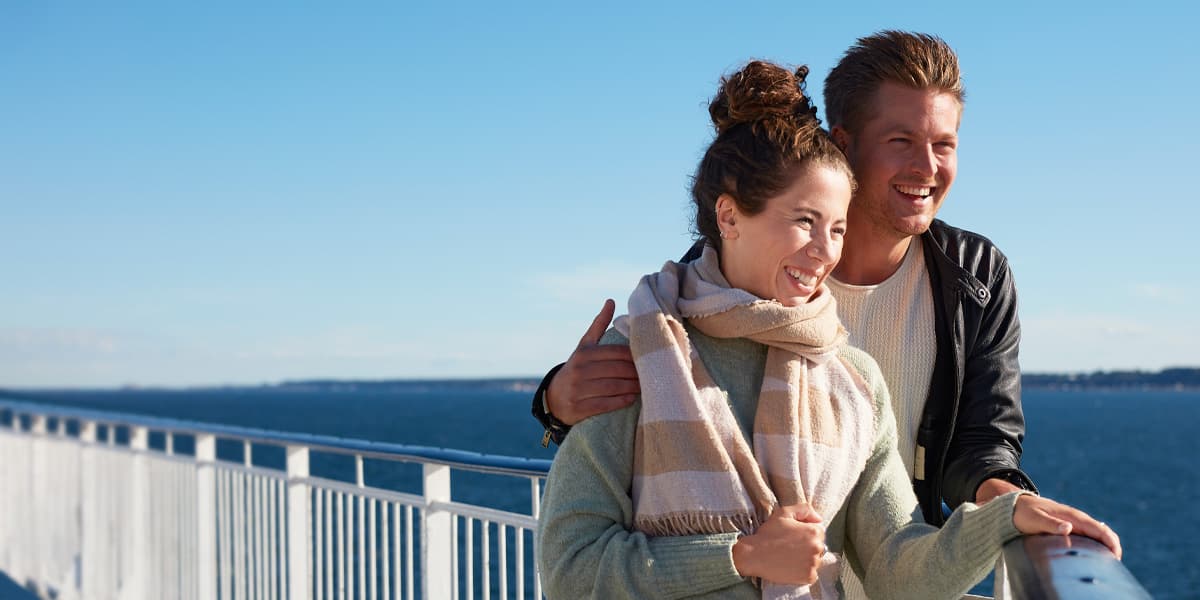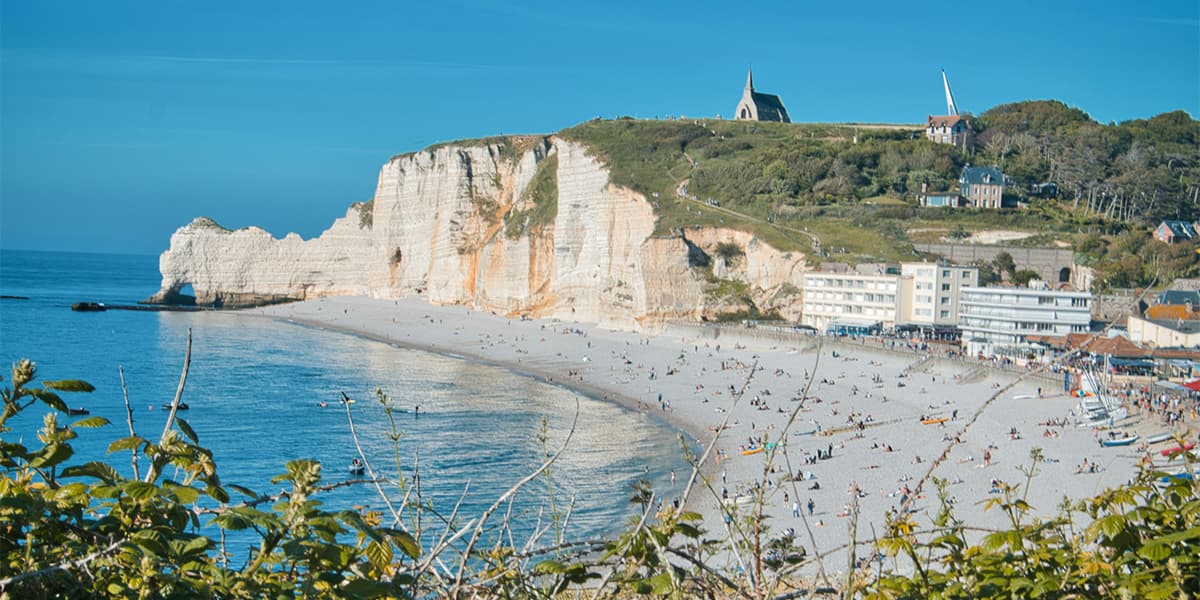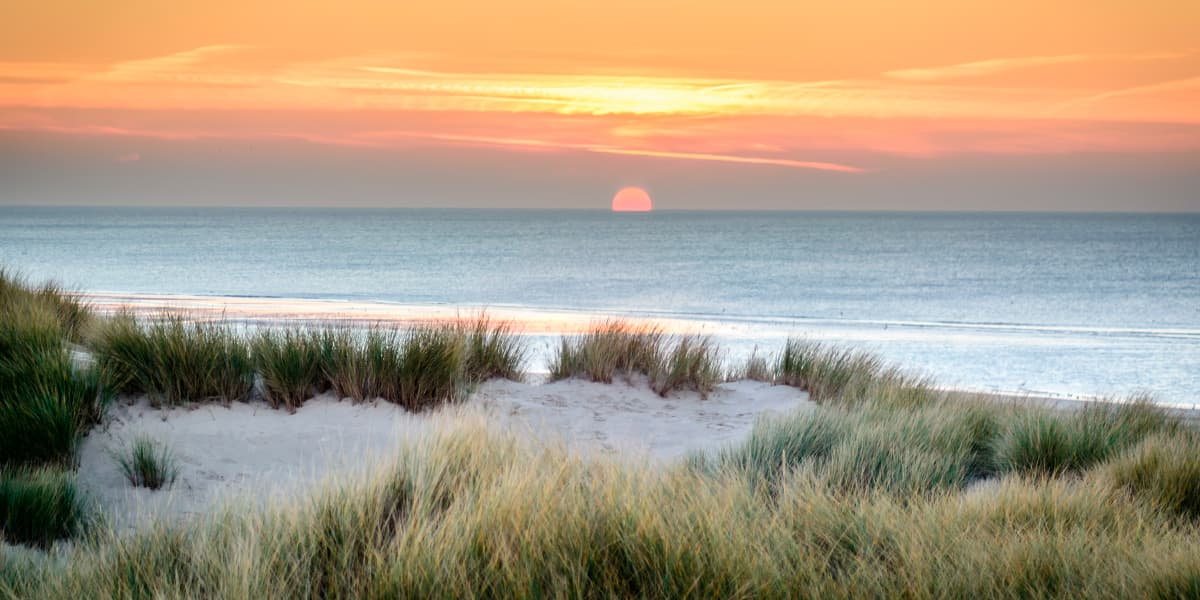Discover France’s vibrant surfing culture
Surfing is an exhilarating activity, whether you’re a professional or just getting started. France is blessed with open beaches attracting Atlantic waves and slower Mediterranean currents, making it a haven for surfing enthusiasts.
Catch incredible waves along the Silver Coast in the Aquitaine region, or enjoy Corsica’s relaxing atmosphere. Explore our guide to learn everything you need to know about surfing in France, including the best locations and what to pack.

When to go surfing in France
Autumn is the best time to go surfing in France, between September and October. You can enjoy the warm weather and take advantage of the first winter waves. Spring is ideal, too, as temperatures are still high and the beaches are less crowded than in the summer.
When to go surfing in France also depends on the waves you’re looking for. There are three types:
Beach breaks – These waves break on a sandy seabed and are perfect for beginners, as you don’t need to paddle a long way before riding them.
Point breaks – These wrap around a point or a headland before running along the coastline. They’re usually long and suitable for experienced surfers.
Reef breaks – These waves break over an area of coral or rocky reef. They’re long and involve a lot of paddling before you can ride them, making them more suitable for professionals.

1. Normandy
Travelling to Normandy? Explore breathtaking natural scenery and historic sites before riding the waves.
Étretat, Seine-Maritime
Type: Reef break Wind direction: South Experience level: Advanced
Normandy’s crowning jewel is a popular surf spot. Suitable for experienced surfers, Étretat promises incredible waves.
Yport, Seine-Maritime
Type: Point break Wind direction: Southwest Experience level: All
Yport boasts spectacular westerly waves for expert surfers. It’s protected by a huge white limestone cliff, providing the ideal backdrop for adrenaline seekers. The beach has many colourful huts and fishing boats, adding extra charm to this picturesque setting.
Trouville-sur-Mer, Calvados
Type: Beach break Wind direction: South Experience level: All
One of Normandy’s most charming spots, Trouville-sur-Mer has many sandbanks on which the waves break. These make it suitable for all experience levels and paddle enthusiasts. If you’re new to surfing, you can attend classes at the local surf school.

2. Brittany
Home to stunning architecture and natural wonders, Brittany provides the perfect backdrop for experienced and beginner surfers.
La Torche, Finistère
Type: Beach break Wind direction: East Experience level: All
The rocky promontory of La Torche is a hotspot among surfers, thanks to its strong wind. The waves are usually flat and frothy, making them ideal for beginners and funboard enthusiasts. You’re guaranteed great fun year-round, whatever the tide.
Pointe de Dinan, Finistère
Type: Point break Wind direction: Northwest Experience level: Intermediate-advanced
Offering a unique outlook over the sands of Anse de Dinan, the Pointe de Dinan is another popular spot among expert surfers. This exposed reef and point break provides great waves, especially during spring. It’s surfable at all stages of the tide.
Guidel, Morbihan
Type: Beach break Wind direction: Northwest Experience level: All
Known as the Ville de Surf (Surf City) among locals, Guidel spans over 15 km. This spot is perfect for all experience levels, with Loc’h Beach popular among beginners and Kaolins Beach a fan-favourite among professionals. The latter promises three-metre-high waves with thrilling tube plunges.

3. The Côte d’Argent (Silver Coast)
Overlooking the Atlantic, the Côte d’Argent has some of France’s biggest waves and dunes. It hosts two internationally renowned surfing competitions, the Quiksilver Pro France and the Lacanau Pro.
Lacanau, Gironde
Type: Beach break Wind direction: East Experience level: All
Boasting a unique surfing culture since 1979, Lacanau spans over nine miles, providing plenty of space for all experience levels. The consistent waves and wind promise fun in abundance all along the coast, with the best rides near Bordeaux. Head to La Plage Centrale or La Norde for strong and punchy breaks.
Hossegor, Nouvelle-Aquitaine
Type: Beach break Wind direction: East Experience level: All
Hossegor promises waves for all abilities. They measure up to 5 metres, gaining power from an offshore submarine canyon. Les Culs Nus and La Sud are beginner-friendly beaches, while La Nord offers challenging waves for expert surfers.
Soulac-sur-Mer, Gironde
Type: Beach break Wind direction: East Experience level: All
At the top of the Côte d’Argent and surrounded by the expansive Médoc vineyards, Soulac-sur-Mer is a firm favourite among surfers. Secluded and unspoilt, it’s the ideal spot to perfect your surfing skills or learn how to master incredible tubes.

4. The Basque Coast
Straddling Spain and France, the Basque Coast boasts glorious stretches of coastline and countryside. Whether you’re ready to put your surfing skills to the test or want to relax in an idyllic setting, this part of France won’t disappoint.
Anglet, Pyrénées-Atlantiques
Type: Beach break Wind direction: East Experience level: All
With its 11 Atlantic beaches, Anglet deserves a special mention. Located next door to Biarritz, this area has some of France’s most beautiful beaches, including Les Cavaliers and La Marinella. The former is famous for its exposure to the wind, which creates incredible tubular waves, while the latter is best for beginners and families.
Biarritz, Pyrénées-Atlantiques
Type: Beach break Wind direction: West Experience level: All
One of France’s most popular holiday resorts, Biarritz is a haven for surfing enthusiasts. Experienced riders will enjoy the challenging waves at La Grand Plage, overlooking the casino and the Hotel du Palais. If you’re a beginner, head to La Côte des Basques for low tides and easy waves.
Bidart, Pyrénées-Atlantiques
Type: Beach break Wind direction: West Experience level: All
Located to the south of Biarritz, Bidart is a picturesque village with a vibrant surfing culture. The 100 Marches Beach is a favourite among beginners thanks to its moderate waves and wind. It’s easily accessible at low and high tide, meaning fun is guaranteed all year round.

5. Corsica
If you’re looking for sandy beaches, turquoise waters and unspoilt swathes of countryside, it doesn’t get much better than Corsica. This French pearl is a surfer’s paradise, with regular winds throughout winter and spring.
Algajola
Type: Beach break Wind direction: Southwest Experience level: All
Algajola is the island’s longest wave spot, offering reliable surfing conditions. This beautiful location in the north of Corsica is surrounded by spectacular natural scenery and receives offshore winds from the southwest.
L’Ostriconi
Type: Beach break Wind direction: Southwest Experience level: All
L’Ostriconi is located in the north of the island and is another fan favourite. Experienced and beginner surfers can enjoy plenty of short-period ocean waves, the so-called wind swells, cruising over with the Mistral wind.
Ruppione
Type: Beach break Wind direction: East Experience level: Intermediate-advanced
This southwestern corner of heaven is the go-to place for expert surfers. The south offers the most reliable conditions, while the north has a dash of underwater reef. Ruppione is home to the island’s best surfing school, Surfing Corsica.

Surfing essentials
Whether you’re an experienced surfer or are just learning to master the waves, your holiday must-haves include the following:
A soft-top surfboard
Leashes and leg ropes
Wax and traction pads
Fins
A wetsuit or rashguard
A towel
High-quality sunscreen
Sunglasses

Travelling to France from the UK
Ready for your surfing adventure? Hop aboard our ferries to France and enjoy first-class facilities.
Our Newhaven to Dieppe, Dover to Calais, and Dover to Dunkirk routes will get you to France quickly and comfortably. Enjoy duty free shopping, fantastic food on board and entertainment for kids. When you sail on board our ferries, you can take your vehicle, pet and as much luggage as you wish.
If you’re planning a road trip along the French coastline, learn more about the local driving rules in our handy guide. Find the answers to commonly asked questions on our FAQ page.




